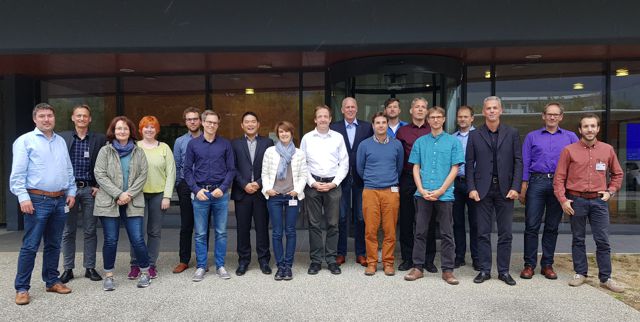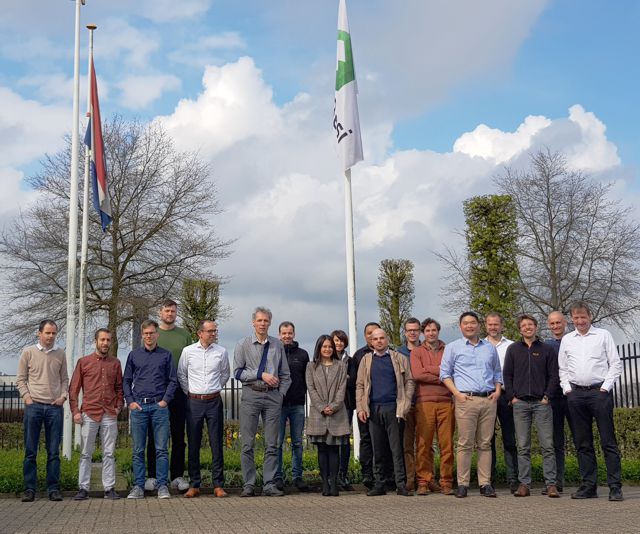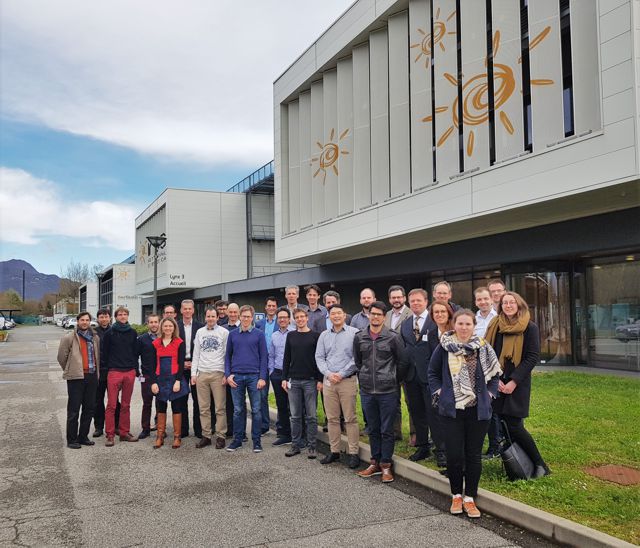M36 meeting

The final general assembly meeting at the end of month 36 was hosted by CEA-INES in Chambery, France on Sep 24 2019. The effort of the consortium members during the last six months was focused in pushing the limits to reach the project goals. The most important highlights are:
- Completion of the second round robin on TCO and carrier selective junction layers.
- High mobility ITO (90 – 100 cm²/Vs) layers were obtained after annealing.
- Optimized plating route with AZO as TCO yielded 21.8% cell efficiency with 79.8% FF.
- Simplified plating route without resist mask based on selective plating yielded 21.2% cell efficiency which is very close to the precursor limit.
During this period, 3 papers were published in scientific journals and there were 14 presentations in 5 conferences and workshops:
- Metallization & Interconnection Workshop 2019: 1 visual
- ETIP PV - Readying for the TW era: 1 visual
- IEEE PVSC 2019: 2 oral
- EU PVSEC 2019: 4 oral, 3 visual
- High Efficiency Approaches in c-Si PV Workshop: 3 oral


